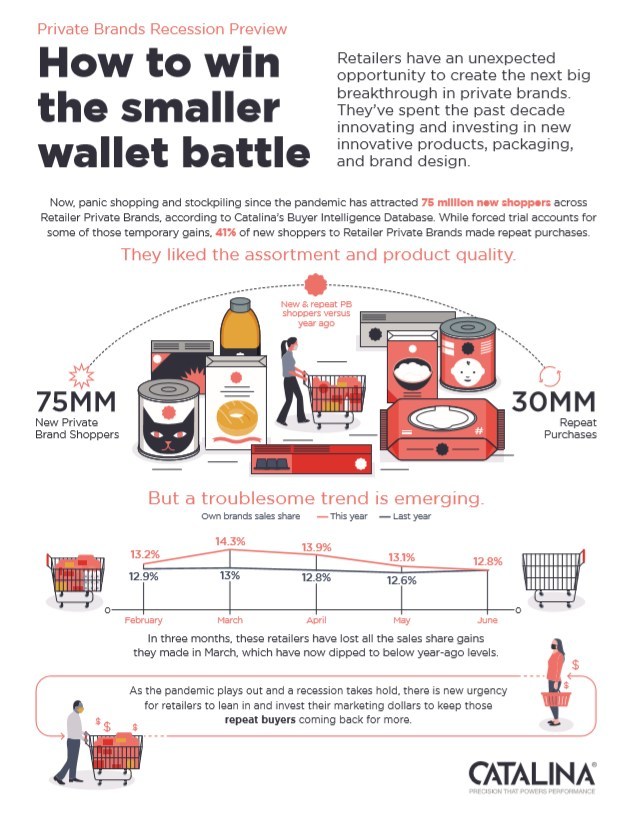Retailer Private Brands have an urgent opportunity to keep some of the 75 million new shoppers they gained during the pandemic. But that window is closing quickly as national brands begin investing their promotional dollars again.
While 30 million shoppers made repeat purchases, trends from Catalina’s Buyer Intelligence Database show that overall Retailer Private Brands sales share gains have disappeared.

According to Wes Bean, senior vice president of Catalina’s U.S. retail network: “The pandemic created a decade’s worth of trial in a few weeks. As the predicted recession sets in, Retailer Private Brands need to start behaving like national brands, leaning into marketing across channels to promote the value of these products and the innovative portfolios they’ve developed. One-off campaigns won’t win the day.”
Specific types of shoppers with whom Retail Private Brands have had big wins during the pandemic include:
- Families with young children
- Bakers and breakfast makers
- Natural and organic seekers
Yet even these types of shoppers are gravitating back to some national brand products, like flour and pancake mixes. The biggest opportunity lies with the natural and organic seekers who are changing their overall buying patterns. Catalina data shows many “strong” and “very strong” seekers have been attracted to private brands for the first time.
“New shopping habits and tighter wallets require closer integration with an investment in marketing communication to drive loyalty with these new private brand shoppers,” Bean said. “This isn’t a case of pulling out the 2008 Recession playbook and hitting repeat.”
Catalina recommends five ways Retailer Private Brands can invest smartly now before they lose more of the sales share they gained:
- Think strategically about how marketing can improve their business across the store, not just with one-off campaigns for this month’s new product.
- Start building effective 1:1 personalized conversations along the shopping journey. Do not rely solely on promotions and unnecessary discounts when data analytics can identify those willing to pay full price for the value private brands represent.
- Remind new buyers of relevant private brand products throughout a given portfolio. Now, price, variety, cost, and differentiation can better stand up to buyer demand with value that addresses their unique needs. All that hard work has already been done.
- Set specific growth goals for each private brand that goes beyond just sales and sales share. Consider metrics like sales per trip and trips per household. Align marketing efforts to these specific goals.
- Seek the why behind the buy: What are the underlying household preferences and behaviors driving potential buyers’ interest and repeat participation with attributes of a specific private brand?





